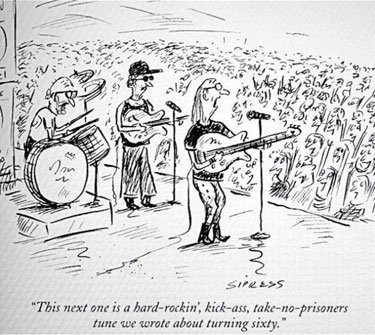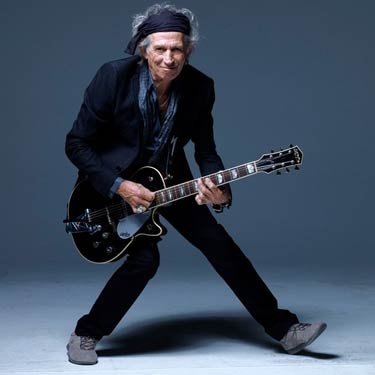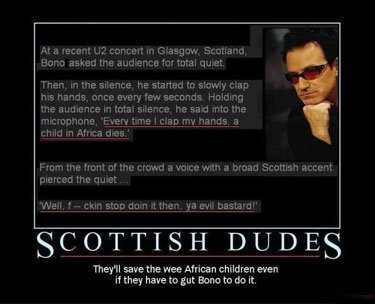Procul Harum Blamed for Kidnapping Schoolgirls
"A Whiter Shade of Pale", Amusement, Boko Haram, Nigeria, Procul Harum, Rock & Roll, Terrorism
The Daily Star reports the confusion.
Procol Harum, who came to fame with their 1967 single A White Shader of Pale, have been blamed for the horrific kidnapping after people confused them with radical militant group Boko Haram.
Many across the internet have asked why the British progressive rock band would do such a thing and wondered how the hippie groovers had become “terrorists”.
One Twitter user said: “It’s shocking that Procol Harum’s records are still being played on the radio after what they did in Nigeria.”
Another wrote: “Wow! What happened to Procol Harum? Whiter Shade of Pale was a great song, but it doesn’t excuse terrorism.”
Yet despite the controversy, it seems most of the comments are tongue-in-cheek.
But it was reported that an expert with “knowledge of Nigeria” did also make the blunder too, calling Boko Haram “Procol Harum” throughout a radio interview.
This isn’t the first time that the band have been confused with the terrorist organisation.
Last July, vocalist and keyboard player Gary Brooker was forced to clear up the mess between the two groups whena US senator confused them live on Fox News.
Members of Boko Haram burned down churches and attacked a local community.
And Mr Brooker said: “We have had nothing to do with the church burning and bombing of district police headquarters in Northern Nigerian states, or any Nigerian states for that matter.
“You have us mixed up with the Nigerian terrorist organisation, Boko Haram.
“We are Procal Harum, completely different, just the name sounds a bit the same.”
The confusion led to the head of the Nigerian secret service calling for the band’s extradition.
He reportedly said on air: “As part of my investigation I have been listening to the back catalogue of Procal Harum and have to admit I am positively confused. Can somebody please tell me what on earth a ‘fandango’ is?
“We would be interested to start extradition proceedings ASAP.”
Brooker responded to the accusations, saying: “I don’t think Boko Haram have released any progressive rock albums, at least not to my knowledge, so that should prove our innocence.
“So please leave us alone. Peace and Love.”
Keith Richards Describes the Composition of “Street Fighting Man”
"Street Fighting Man", Keith Richards, Rock & Roll, Rolling Stones, Street Fighting Man, The Rolling Stones
Keith Richards tells the Wall Street Journal that the opening chords of Street Fighting Man were intended to imitate the sound of French police sirens.
Around this time, I became fascinated by one of the early cassette tape recorders made by Philips. The machine was compact, so it was portable, and it had this little stick microphone, which would allow me to capture song ideas on the fly. So I bought one, but as I watched the small tape-cartridge reels turn, I began to think of the machine not as a dictation device but as a mini recording studio. The problem is I couldn’t use an electric guitar to record on it. The sound just overwhelmed the mike and speaker. I tried an acoustic guitar instead and got this dry, crisp guitar sound on the tape—the exact sound I had been looking for on the song.
At the time, I was experimenting with open tunings on the guitar—you know, tuning the strings to form specific chords so I could bang out the broadest possible sound. That’s how I came up with “Street Fighting Man’s” opening riff—even before I bought the Philips. I based the rest of the song’s melody on the tone pattern of those odd sirens French police cars use [sings the siren and lyrics to illustrate].
Sometime in early ’68, I took the Philips recorder into London’s Olympic Sound Studios and had Charlie [Watts] meet me there. Charlie had this snap drum kit that was made in the 1930s. Jazz drummers used to carry around the small kit to practice when they were on the bus or train. It had this little spring-up hi-hat and a tambourine for a snare. It was perfect because, like the acoustic guitar, it wouldn’t overpower the recorder’s mike. I had Charlie sit right next to the mike with his little kit and I kneeled on the floor next to him with my acoustic Gibson Hummingbird. There we were in front of this little box hammering away [laughs]. After we listened to the playback, the sound was perfect.
On that opening riff, I used enormous force on the strings. I always did that and still do. I’m looking at my hands now and they look like Mike Tyson’s. They’re pretty beat up. I’m not a hard hitter on the strings—more of a striker. It’s not the force as much as it is a whip action. I’m almost releasing the power before my fingers actually meet the strings. I’m a big string-breaker, since I like to whip them pretty hard.
Read the whole thing.
——————————————-
You can kind of hear the siren motif, if you try, but I think the opening principally creates a powerful sense of expectation of near-term melodic gratification and fulfillment.
Is that the Name of a Piece of Ikea Furniture or of a Death Metal Band?
Death Metal, Ikea, Rock & Roll, Test
“Hallelujah”
"Hallelujah", "Hallelujah" (Rock Song), Jeff Buckley, Music, Popular Culture, Recordings, Rock & Roll
Leonard Cohen‘s “Hallelujah†was written in 1984 for the back side of an album ultimately rejected by that performer’s label.
“Hallelujah” began being covered in early 1990s by Jeff Buckley, a young singer-songwriter performing in the East Village, who recorded it on his only album in 1994, three years before he drowned, getting caught in a boat wake, in a river in Tennessee. Buckley’s version was considerably more emotional and his voice more sympathetic than Cohen’s. Buckley’s early and romantic death brought attention to the song, and one thing led to another.
Today, “Hallelujah†is one of the most-frequently-performed rock songs and a staple routinely used elegiacally in movies and television shows. It has been covered by large numbers of renowned performers, including Bono, Bob Dylan, U2, Justin Timberlake, Rufus Wainwright, and k.d. lang, and is used as a kind of secular funeral hymn around the world.
The song’s phenomenal rise to popularity has even resulted in a book study by Allen Light, The Holy or the Broken: Leonard Cohen, Jeff Buckley, and the Unlikely Ascent of “Hallelujah”
————————-
The Jeff Buckley version.
All-Time-Best Craigslist Lost Connections
Craigslist, O tempora o mores!, Rock & Roll, Viral Entertainment, Young Love
Evidently originally from the Chicago edition of Craigslist, republished at UPROXX, Gawker, Democratic Underground , and so on.
Me: Blue hair, silver tube top, fishnets, Knee high black biker boots.
You: Red mohawk, black pentagram gauges, viper piercings.I was grinding on you in the pit, then we went to the bathroom, and got f***ed up. You had a nice c**k and I was wasted so I let [you] raw dog it in the stall. You were really good and you had to gag me so I would make too much noise.
Anyway I’m pregnant. It’s yours. contact me if you want to be part of your child’s life.â€
Ne Comprehend Pas Department
Bizarre, Mick Jagger, Move Like Jagger, Rock & Roll
Jim Geraghty forwards Jim Lileks’ tweeted comment on a new song titled “Moves Like Jagger” by a group called Maroon 5, and marvels himself that today’s youth sings tributes to the masculine appeal of a (once androgynous) geezer.
You kids know Mick Jagger is 68, right? I’m sure he’s in relatively limber, perhaps drug-preserved state for a near-septuagenarian, but really? Tim Noah’s nephew [Adam Levine] is singing that he can dance like him and Kesha’s only interested in guys collecting Social Security? Did our pop culture get stuck on “pause” at some point?
It seems a bit strange to me that he still performs and that people so young even know who Mick Jagger is. The Stones ought to be, at this point, headlining on Cruise ships and in Florida retirement homes.
Personally, I have a suspicion that on very damp mornings like this, I move exactly like Jagger (before he’s had plenty of meds).
NSFW
“The Conservative”
"The Conservative", Conservatism, Music, Recordings, Rock & Roll, The Orlons
The Orlons were a black Philadelphia R&B group which began recording in 1960.
Hat tip to Walter Olson.













